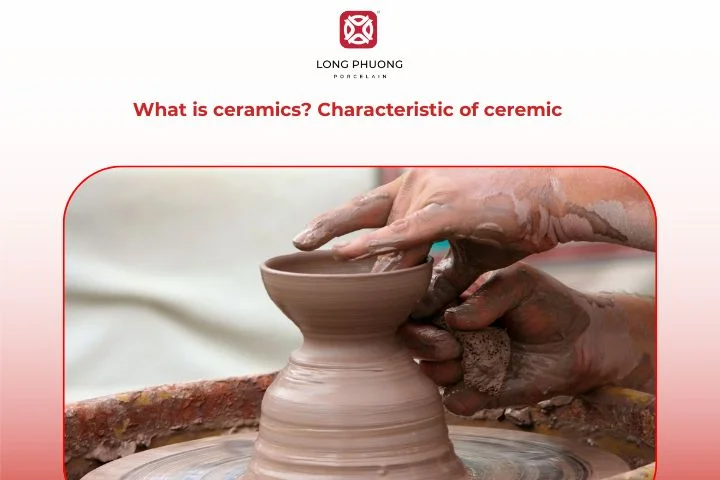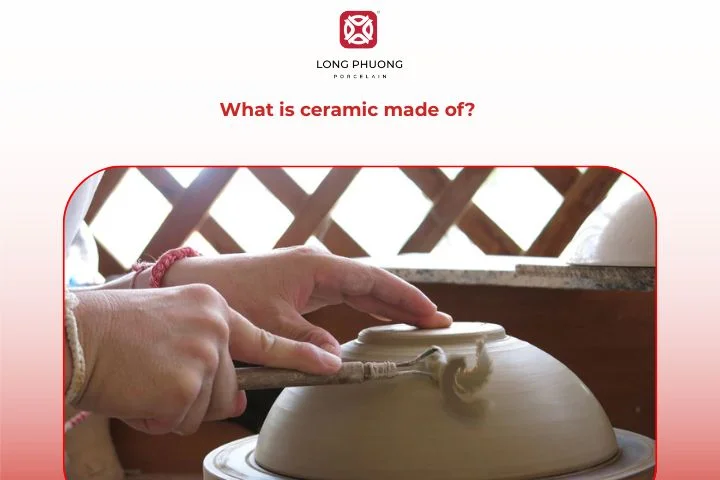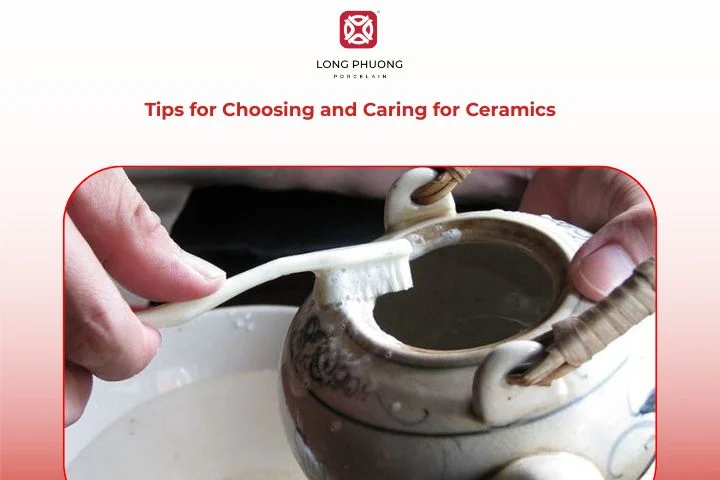Ceramics have been part of human life for thousands of years. From ancient pottery to modern dinnerware, ceramics are everywhere in our daily routines. But many people still wonder: what is ceramics and how is it different from porcelain? In this guide, we’ll explore what is ceramics, what is ceramics made of, and the differences between ceramic and porcelain. We’ll also share practical tips on how to care for your ceramics and answer common questions. By the end, you’ll know exactly how to choose the best dinnerware for everyday use or luxury dining.

1. What is ceramics? Characteristic of ceremic
Before comparing, let’s begin with the basics. What is a ceramic? In simple terms, a ceramic is any object created from clay that has been shaped and hardened by high-temperature firing. The word “ceramic” actually comes from the Greek word keramos, meaning “pottery.”
Ceramics are one of the oldest human inventions, dating back over 20,000 years. From ancient storage jars to delicate tea sets, ceramics have been a trusted material because of their durability and beauty.

Key characteristics of ceramics include:
- Hardness: Once fired, ceramics become very strong and resistant to wear.
- Heat resistance: They can withstand high temperatures without deforming.
- Porosity: Some types of ceramics absorb water if not glazed.
- Versatility: They can be molded into everyday items like bowls or into decorative works of art.
So, when someone asks, “ceramic what is?”, the short answer is: ceramics are clay-based objects transformed by heat into a durable, often beautiful, product.
2. What is ceramic made of?

So, what is ceramic made of? The primary ingredient for most traditional ceramics is clay, a type of fine-grained soil. Clay is a natural, abundant material. However, the exact composition can vary. Other materials are often mixed in to change the final product’s properties.
These can include:
- Feldspar: This mineral helps lower the firing temperature and acts as a flux, helping the materials fuse together.
- Silica: Often in the form of quartz, silica adds strength and stability.
- Alumina: This compound is used to create strong, hard industrial ceramics.
The process involves shaping the raw materials, often in a liquid or powder form, and then firing them in a kiln at temperatures ranging from 1,000°C (1,832°F) to 2,000°C (3,632°F). This heat causes chemical changes that make the material solid and permanent.
See more: 5 steps in the ceramic processing process you need to know
3. Ceramics vs porcelain: What is the difference?

This is a common question, and for good reason! While all porcelain is a type of ceramic, not all ceramics are porcelain. Think of it like this: all squares are rectangles, but not all rectangles are squares.
Porcelain is a specific, high-end type of ceramic.
The main differences are in their raw materials and the firing temperature:
- Materials: Porcelain is made from a special kind of clay called kaolin, a very pure, fine-grained white clay. This is what gives porcelain its bright white color and translucency. Other ceramics use a wider range of clays.
- Firing Temperature: Porcelain is fired at a higher temperature (1,200-1,400°C or 2,200-2,550°F) than most other ceramics. This intense heat causes the particles to vitrify (become glass-like), which makes the material non-porous and extremely strong.
- Appearance: Because of the pure kaolin clay and high firing temperature, porcelain is typically whiter, smoother, and more translucent than other ceramics.
In short, when you ask what is ceramics and compare it to porcelain, remember that porcelain is the more refined, durable, and elegant cousin of traditional ceramic.
4. Tips for Choosing and Caring for Ceramics

Now that you know the difference, how do you choose ceramics or porcelain for your home? The answer depends on how you plan to use them.
Choosing ceramics:
- For everyday meals, choose sturdy ceramic plates and bowls with a strong glaze. They are practical and affordable.
- For formal dining or special occasions, porcelain is the better option. Its smooth finish and elegant look elevate any table setting.
- Consider your cooking habits. Some ceramics are oven-safe and perfect for baking, while others are best reserved for serving only.
Caring for ceramics:
- Wash with warm water and mild dish soap to maintain the glaze.
- Avoid using abrasive scrubbers that can scratch the surface.
- Don’t expose ceramics to sudden temperature changes (for example, moving a hot dish straight into cold water), as it may cause cracks.
- Store them carefully with soft dividers if stacking fine porcelain plates.
A little care goes a long way in keeping your ceramics beautiful for years.
5. FAQ

Curious readers often have specific questions about ceramics. Here are the most common ones:
5.1. What are the three types of ceramics?
The three main types are earthenware, stoneware, and porcelain. Earthenware is porous and fired at a low temperature. Stoneware is denser and fired at a medium temperature. Porcelain is the strongest and most refined, fired at the highest temperature.
5.2. Is ceramic good for a kitchen?
Yes! Ceramics are excellent for kitchen use. They’re non-porous, easy to clean, and resistant to stains and odors. High-quality ceramic and porcelain are perfect for dinnerware, bakeware, and tiles
5.3. What are ceramics used for?
The uses for ceramics are incredibly diverse! They’re in our homes as dinnerware, tiles, and sanitary ware. They’re also used in electronics (insulators), aerospace (heat shields), and medicine (implants).
5.4. What is ceramics vs pottery?
Pottery is a traditional form of ceramic, usually earthenware or stoneware. It’s handmade, rustic, and less refined. Ceramics is the broader category that includes pottery, porcelain, and other forms.
5.5. Is it ceramic glass or plastic?
This depends on the item, but they are all very different materials. Ceramics are formed from clay and minerals. Glass is made by melting sand. Plastic is a synthetic material made from polymers. While they might look similar sometimes, their properties and compositions are completely different.
6. Long Phuong porcelain – trusted brand for premium porcelain tableware
If you’re looking for durable, elegant, and high-quality tableware, consider Long Phuong Porcelain. As a leading manufacturer with over two decades of experience, Long Phuong combines traditional craftsmanship with modern technology to create stunning porcelain dinnerware. Each piece is meticulously crafted and fired at high temperatures to ensure it’s not only beautiful but also resistant to chips and scratches.

Whether you’re setting up a new kitchen or upgrading your dining experience, explore our range of premium porcelain products. You can trust Long Phuong Porcelain to bring timeless elegance and exceptional quality to your table.
Shop our exquisite collections today!
Long Phuong Group Joint Stock Company
- Phone number: (+84) 989 595 866
- Email: export@longphuong.vn
- Factory: Hap Linh Industrial Cluster, Hap Linh, Bac Ninh, Vietnam
- Showroom Ha Noi: 59 Cua Bac, Ba Dinh Ward, Hanoi, Vietnam
- Showroom Ha Noi: 37 Cua Nam, Cua Nam Ward, Hanoi, Vietnam
- Showroom TP. Ho Chi Minh: 127 Le Thi Rieng, Ben Thanh Ward, Ho Chi Minh, Vietnam
Related Posts
CEO of Long Phuong Group Joint Stock Company, with more than 20 years of exploration and research to obtain the best formulas and professional experience, Long Phuong Porcelain has produced more than 400 designs of all kinds of household porcelain, Significant contributions to Vietnam's ceramic industry.
 Vietnam
Vietnam
